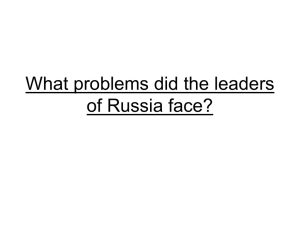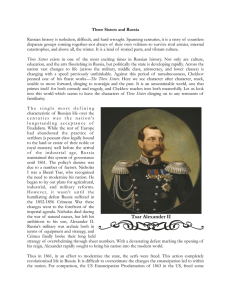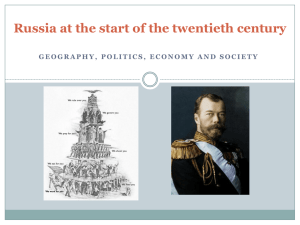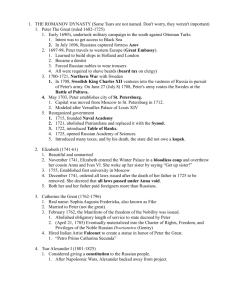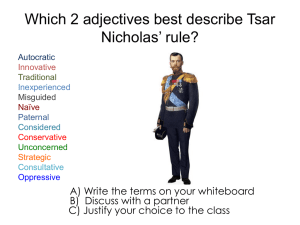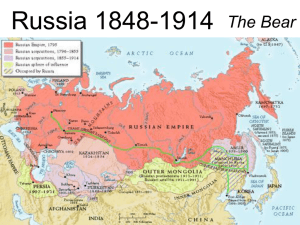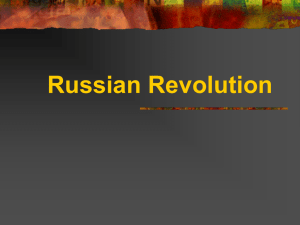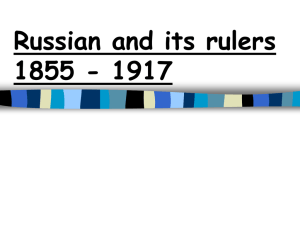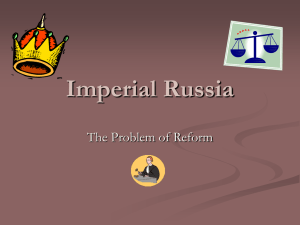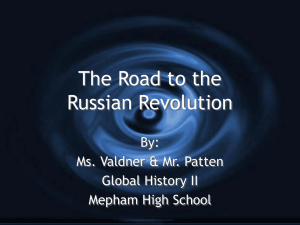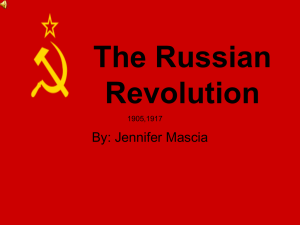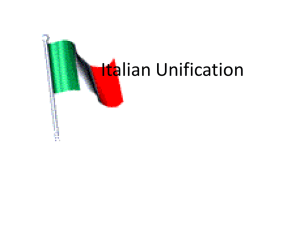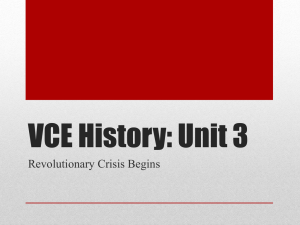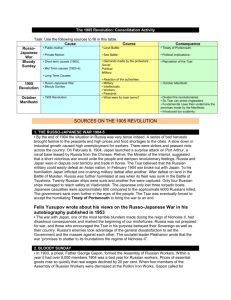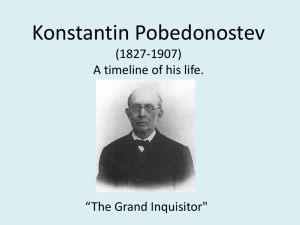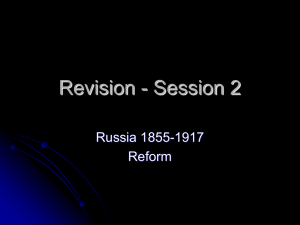The Decline and Fall of the Romanov Dynasty in
advertisement
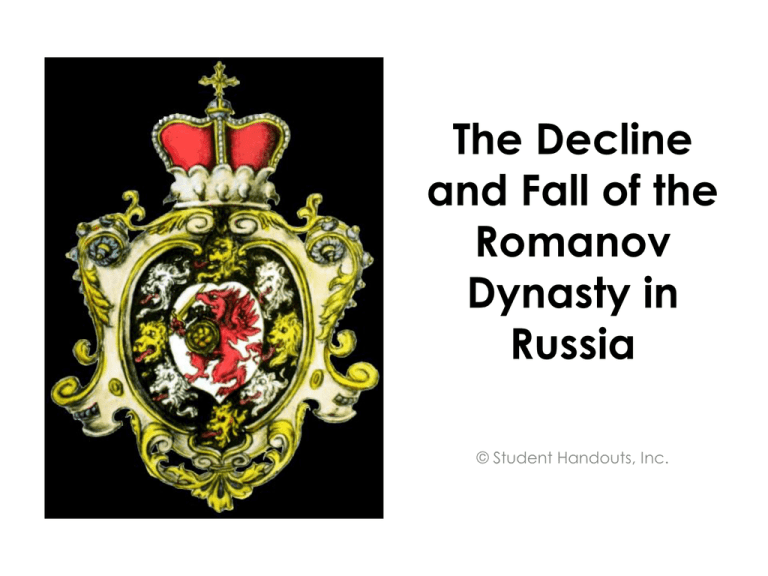
The Decline and Fall of the Romanov Dynasty in Russia © Student Handouts, Inc. The Last 5 Tsars 18011825 18251855 18551881 18811894 18941917 •Alexander I •Nicholas I •Alexander II •Alexander III •Nicholas II Alexander I (ruled 1801-1825) • Grandson of Catherine the Great • Inherited throne after father (Paul I) murdered • Ruled Russia during the Napoleonic wars • Expanded Russian empire with Finland and part of Poland • Initially introduced reforms but later took these back • Died of typhus Nicholas I (ruled 1825-1855) • Younger brother of Alexander I • Decembrist Revolt (1825) – Attempted coup after Nicholas I’s older brother, Constantine, declined the throne (after Alexander I died of typhus) – Nicholas I’s reaction set the tone for his firm rule of Russia • Highly reactionary – Principles of “Autocracy, Orthodoxy, and Nationality” • Feared nobles’ reaction to potential reforms, such as abolishing serfdom Alexander II (ruled 1855-1881) • Crimean War (1853-1856) – Loss of war prompted military modernization • Universal military conscription • Reforms – Allowed for early form of corporations (LLCs) – 1861—emancipated the serfs – Police force – Local self-government (zemstvo) – Had finished plans for a duma the day before his assassination • Assassination – Attempts in 1866, 1879, 1880 – 1881—bomb set by members of Narodnaya Volya (People’s Will), a nihilist group Alexander III (ruled 1881-1894) • Along with his son, the future Nicholas II, he witnessed Alexander II’s assassination – Anti-Semitism—blamed Jews for his father’s assassination • May Laws (1882)—harsh restrictions on all Jews • Pogroms—led to Jewish immigration to the U.S. and elsewhere – Film reference: “Fiddler on the Roof” • Return to principles of “Nationality, Autocracy, and Orthodoxy” – Put local control in the hands of appointed officials – Secret police – Strict censorship – Political prisoners exiled to Siberia • Died of kidney disease at age 49 Nicholas II (ruled 1894-1917) • Married Alexandra, a granddaughter of Queen Victoria of Great Britain – Their son, Alexei, was a hemophiliac • Treated by the “mad monk” Grigori Rasputin • Completed the Great Siberian Railway – Port at Vladivostok in the east – Russians have historically sought warm-water ports • Rejected calls for democratic reforms • Last Russian tsar – Executed along with his wife and children in 1918 Russo-Japanese War (1904-1905) • Imperial rivalry between Japan and Russia over Korea and Manchuria • Japanese surprise attack at Port Arthur, Manchuria – First modern defeat in war of a European power by a non-European power • Treaty of Portsmouth (1905) – Russians left Manchuria – Japan gained recognition of Korea as part of its sphere of influence (i.e., imperialism) – Japan gained the southern half of Sakhalin Island Russian Revolution of 1905 • Among long-standing complaints, the people were unhappy over Russia’s defeat in the Russo-Japanese War • Bloody Sunday (January, 1905) – Peaceful protesters, led by a priest named Gapon, marched on the Winter Palace in St. Petersburg with a petition – Shot at by tsar’s forces – 92 dead and hundreds wounded Russian Duma • August, 1905—Duma organized as an advisory body – But this wasn’t well received • October Manifesto – Legislative powers for the Duma and civil liberties for the people • Nicholas II repeatedly butted heads with the Duma – Socialists and revolutionaries kept winning seats World War I and 1917 Revolution • Russians joined with Great Britain and France to fight the Germans and Austrians – Russian army suffered terrible losses due to outdated equipment and poor leadership – Tsar came to the front to lead troops, leaving Tsarina Alexandra to rule – Tsarina disliked • Foreign heritage • Influence of Rasputin • 1917 – These factors, along with food shortages and general discontent, led to full-scale revolution – Russia withdrew from World War I – Civil war in Russia over which group would rule Russia – Tsar and his family assassinated by Bolsheviks in 1918

